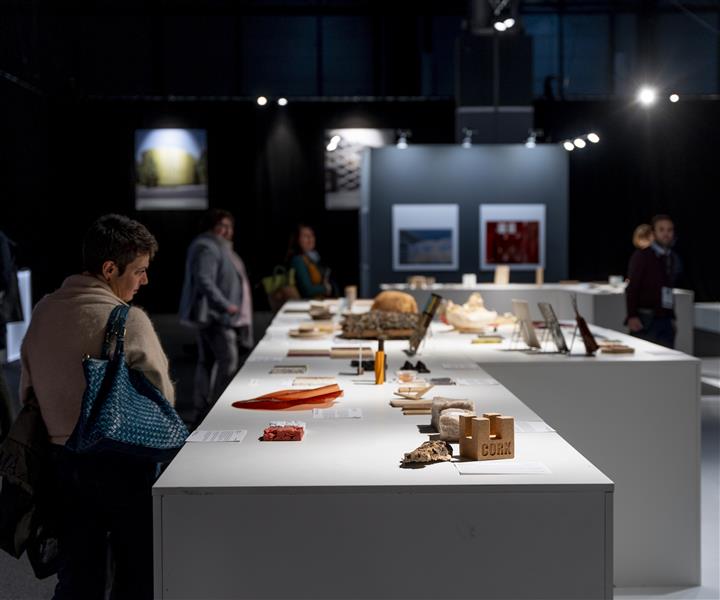
Materials FOR and FROM the Earth by MaterialDriven
Our relationship with the Earth is many faceted. Whether directly or indirectly, we depend entirely on raw materials that have been excavated from, grown or manufactured on it. Equally, our footprint on the earth is colossal. A recent study has revealed that human-made materials now outweigh the total mass of Earth's living biomass, a staggering reality that calls even more attention to the materials that designers and engineers are creating. To understand and control the environmental impact that man made materials can have, especially those intended for building and construction, one must first understand the composition of the earth itself and what it offers us today.
FROM the Earth:
The four chief components of the earth's crust are minerals, rocks, soil, and water. These further interact with each other, and strategic combinations of these components produce innovative end materials that have the power to either damage or sustain life on earth. Taking off from the basics—metals, cork, wood and wood composites, glass, and natural textiles—there is a plethora of materials whose ingredients have been partly or wholly ‘extracted’ from the earth.
How this extraction occurs, and how their manufacturing into finished products impacts the earth is crucial, as is the nature of what has been pulled from the earth itself: Is it rapidly renewable? Are there alternatives with a smaller footprint on the earth? Is there a broader environmental problem that may be solved via the (better) sourcing of this material or an alternative?
OF the Earth:
While the array of materials extracted and manufactured from the earth is vast, so is the millennia-old world of materials made simply of ‘earth’, itself. Humans have been creating objects, spaces and tools from clay, soil and stone for at least 25,000 years. Today’s technological developments, and sustainability-driven renewed interest in these materials is pushing them to new heights and capabilities. From new earthen composites, to high performance structural blocks, high end finishes and vibrant natural pigments, there is a spectrum of design products on offer today whose basis lies in our most abundant and locally available earthen resources. Pairing technology with centuries old craft and cultural knowledge in many cases, these even have the power to replace challenging materials such as concrete and plastic in increasingly frequent instances, shifting our perception of earthen materials as temporary, fragile or limiting.
FOR the earth:
The last 5-10 years have sparked an awakening in the design and construction worlds. Creators and users are both aware that any materials employed in products and spaces will eventually return to the earth. These materials either leave a toxic and damaging trail on the environment, or give back, so to speak, breaking down at their end of life into elements which are truly nutritional for the earth. A wave of Regenerative solutions is taking over—compostable, bio-based, bio-fabricated, carbon negative and purifying—each designed FOR the earth as their customer. Often these materials are drawing away waste streams and pollutants from a variety of industries, neutralizing them and transforming them into materials of value.
MaterialDriven’s curation attempts to capture and depict this rapidly evolving design environment, where a variety of exciting, sensory and thoughtful materials FROM, OF and FOR the earth are being developed and implemented in architectural projects daily, driven by a desire to better impact our life sustaining planet.

materialdriven.com
Back to home page